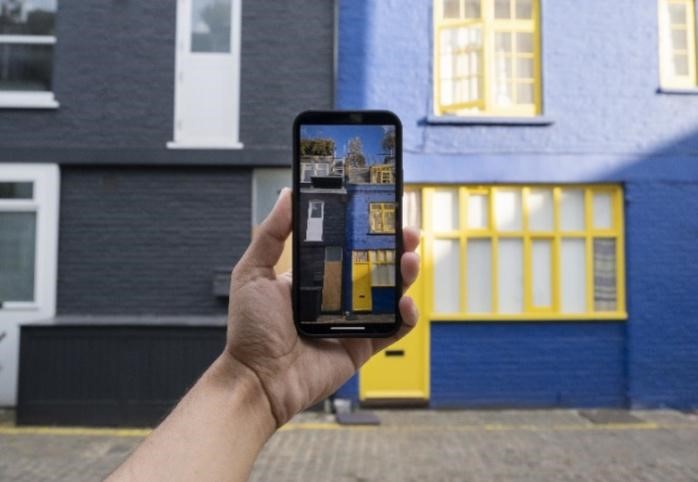Visually: Assisting the Visually Impaired People Through AI-Assisted Mobility
Keywords:
Visually Impaired, Assistive Technology, Mobility Aids, Navigation Assistance, Vision Impairment, AI-Assisted Mobility.Abstract
This research introduces “Visually”, a revolutionary mobile application that aims to address the complications that visually impaired people come across in their daily lives. By deploying advanced deep learning models for real-time object detection, facial recognition, and currency identification with voice outputs for each feature, the “Visually” application strives to enhance the autonomy, independence, and mobility of visually impaired people. The system undergoes thorough training on a diverse dataset, incorporating augmentation techniques to enhance the robustness of the models. The project's multifaceted objectives include a user-friendly interface, real-time object detection, multi-modal recognition, Text-to-Speech audio output, and an overarching aim of enriching the lives of visually impaired individuals. Driven by the global prevalence of visual impairment and the demand for cost-effective solutions, “Visually” is aligned with international efforts for accessibility and inclusivity. For cross-platform compatibility, the machine learning models have been integrated whilst being deployed with TensorFlow Lite. With Offline availability, the application ensures accessibility even in rural areas with limited network connectivity. To make a substantial societal impact "Visually" aims to contribute to a more inclusive and equitable society, by transforming the way visually impaired individuals navigate around the environment. Positioned at the intersection of technology, accessibility, and empowerment, the “Visually” project is poised to bring about positive change for a community that frequently encounters unique challenges in their daily lives.
References
“Seeing AI - Talking Camera for the Blind.” Accessed: May 06, 2024. [Online]. Available: https://www.seeingai.com/
“Noteify: Indian Currency Recognition App”, [Online]. Available: https://github.com/chandran-jr/Noteify
J. K. Mahendran, D. T. Barry, A. K. Nivedha, and S. M. Bhandarkar, “Computer vision-based assistance system for the visually impaired using mobile edge artificial intelligence,” IEEE Comput. Soc. Conf. Comput. Vis. Pattern Recognit. Work., pp. 2418–2427, Jun. 2021, doi: 10.1109/CVPRW53098.2021.00274.
B. Mocanu, R. Tapu, and T. Zaharia, “DEEP-SEE FACE: A Mobile Face Recognition System Dedicated to Visually Impaired People,” IEEE Access, vol. 6, pp. 51975–51985, Sep. 2018, doi: 10.1109/ACCESS.2018.2870334.
“Currency Recognition System Using Image Processing: Libyan Banknote as a Case Study .” Accessed: May 06, 2024. [Online]. Available: http://www.warse.org/IJETER/static/pdf/file/ijeter171022022.pdf
R. C. Joshi, S. Yadav, M. K. Dutta, and C. M. Travieso-Gonzalez, “Efficient Multi-Object Detection and Smart Navigation Using Artificial Intelligence for Visually Impaired People,” Entropy 2020, Vol. 22, Page 941, vol. 22, no. 9, p. 941, Aug. 2020, doi: 10.3390/E22090941.
J. Madake, S. Bhatlawande, A. Solanke, and S. Shilaskar, “A Qualitative and Quantitative Analysis of Research in Mobility Technologies for Visually Impaired People,” IEEE Access, vol. 11, pp. 82496–82520, 2023, doi: 10.1109/ACCESS.2023.3291074.
“REAL TIME OBJECT DETECTION WITH SPEECH RECOGNITION USING TENSORFLOW LITE.” Accessed: May 06, 2024. [Online]. Available: https://www.researchgate.net/publication/359393141_REAL_TIME_OBJECT_DETECTION_WITH_SPEECH_RECOGNITION_USING_TENSORFLOW_LITE
N. Alsharabi, “Real-Time Object Detection Overview: Advancements, Challenges, and Applications,” مجلة جامعة عمران , vol. 3, no. 6, pp. 12–12, Nov. 2023, doi: 10.59145/JAUST.V3I6.73.
K. Vaishnavi, G. P. Reddy, T. B. Reddy, N. C. S. Iyengar, and S. Shaik, “Real-time Object Detection Using Deep Learning,” J. Adv. Math. Comput. Sci., vol. 38, no. 8, pp. 24–32, Jun. 2023, doi: 10.9734/JAMCS/2023/V38I81787.

Downloads
Published
How to Cite
Issue
Section
License
Copyright (c) 2024 50SEA

This work is licensed under a Creative Commons Attribution 4.0 International License.




















